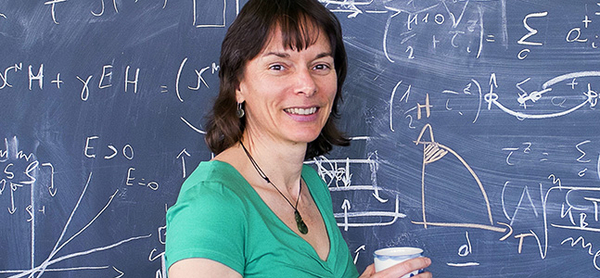“I hope that young researchers won’t heed the usual advice”

A passion for research and finding answers – even for seemingly impossible problems: Nicola Spaldin describes how she successfully strayed from the accepted academic career path.
I was recently taken aback when I realised that I seem to have reached a point in my career where young people have started asking me for advice. My pragmatic side tells me that I should tell students what I had been told myself: do some good work in an established research field and make sure to publish a lot! That is how you make a name for yourself and gain recognition in your community. Keep the risky stuff till later when you are well established.
But deep down I hope that young researchers won’t heed the usual advice. I hope that they find a gripping question that for them becomes the most important question in the world and to which they passionately try to find an answer, thereby starting their own scientific revolution.
This is what happened to me with multiferroics. In the 1990s, people thought that magnetic ferroelectrics – a multiferroic material – were an impossible proposition. Nobody believed that they could become reality. But I wanted to know if this was really the case, threw my career blueprint into the bin and started looking for an answer. Two things were on my side: the theory was sufficiently advanced so that I could study virtual materials using computer models, and I got a grant from the Swiss National Science Foundation.
I had my breakthrough in 2003: together with Ramamoorthy Ramesh, who now teaches in Berkeley, I succeeded in creating the muliferroic material that is most common today: bismuth ferrite. I will never forget that moment: the impossible had become reality. Since that day, I have continued to search for materials with properties that don’t exist as yet or are considered impossible. My team and I develop these mate rials on the computer before we develop them in the lab with colleagues from the Paul Scherrer Institute to study their properties.
When I work I always think about developing new equipment and technologies. One of my aims is to develop a supraconductor that conducts electricity without resistance at room temperature. One day I will succeed.”
Nicola Spaldin, Körber award winner 2015
Nicola Spaldin is professor of materials theory at ETH Zurich. In 2015, she won the Körber European Science Prize worth 750,000 euros. The British chemist and SNSF grantee is known for her pioneering research on multiferroics, a chemical compound consisting of different metals and oxygen. It reacts to both electric and magnetic fields. Multiferroics have the potential to transform information technology: they could replace silicon in microchips, thereby making it possible to manufacture very small and energy-efficient computers and smartphones.